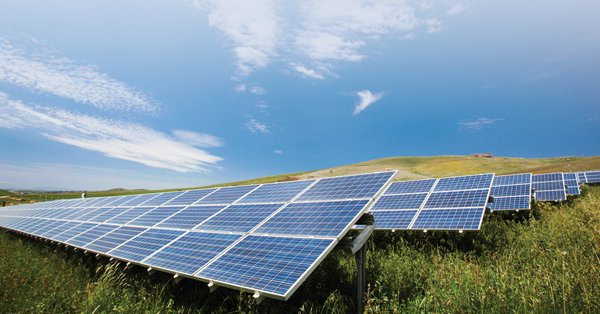India will achieve 76% of 175 gigawatts of clean energy target by 2022
Wood Mackenzie's solar analyst Rishab Shrestha said India faces a myriad of challenges in the renewables industry.

- Country:
- India
India may achieve about 76 per cent of the target of having 175 gigawatts of renewable power generation capacity by the scheduled date of 2022 as it faces myriad challenges, Wood Mackenzie said Monday.
India is targetting 100 GW of solar capacity and 75 GW of wind power by 2022.
"Even with significant cost declines, Wood Mackenzie expects about 76 per cent of the target to be met by 2022 and this would still be a noteworthy achievement," the world's leading research and consultancy firm said in a report.
Wood Mackenzie's solar analyst Rishab Shrestha said India faces a myriad of challenges in the renewables industry.
"The recent cancellation of auctions risks jeopardising investor confidence. Various duties on equipment and the associated uncertainty has led to a short-term uptick in solar prices. This leads to the knock-on effect on already cash-strapped state distribution companies who are showing an unwillingness to green light high priced solar projects," he said.
Nonetheless, the government's commitment and support towards renewables remain strong.
The government has been swift and adaptable at responding to various industry hurdles and are helping reduce project risks. As a result, renewable prices continue to remain competitive.
Wood Mackenzie said combined wind and solar capacity have almost doubled from 2014 levels to 61 GW this year.
"Driving this growth is the significant cost decline that auctions continue to deliver," Shrestha said. "In the next five years, capital costs are expected to decline by 23 per cent for wind and 31 per cent for solar. This trend will only continue as new generation technologies replace old ones."
Wood Mackenzie expected non-hydro renewables to make up 13 for per cent of power generation mix by 2023.
Improving grid flexibility through storage and flexible power generation will be extremely crucial in achieving high levels of renewable penetration, it said, adding that economic competitiveness, technological maturity, and financially healthy off-takers will provide a solid base for renewable capacity growth to cater to electricity demand growth.
"Over the longer-term horizon of 2040, India is forecasted to increase its renewable capacity by around seven times to 384 GW. This share will be driven by diverse sub-segments which include offshore wind, hybrid projects, floating solar and distributed solar. The 384 GW of non-hydro renewables will ultimately contribute 20 per cent of generation share by 2040," Shrestha said.
Wood Mackenzie, however, said coal remains principal energy driver in near term.
Its coal principal analyst Pralabh Bhargava said: "We have increased India's imports for thermal coal from 158 million tonnes to 164 million tonnes in 2018 with a further upside risk of 3-4 million tonnes as coal stocks at Indian power plants and Coal India Ltd are at historically low levels".
India's spot market prices, for both coal and power, are expected to remain strong in the coming months as continuous industrial production growth is pushing demand, while supply remains tight.
"Growth in domestic coal production and dispatches can only partially meet the growing demand for coal, which is resulting in increased reliance on imports. With a decade-low stockpile at Coal India's mines and more than half of the plants with a supercritical level of fewer than seven days' stock, the reliance on imported coal for several power plants will increase the flow of imports into India," Bhargava said.
Until recently, the demand for imported thermal coal was driven by non-utilities, where a lack of domestic supply and the need for high-energy coal kept the segment active in the seaborne market. With the power sector increasingly relying on imports, Wood Mackenzie expected the rally in Indian imports to continue till early next year.
It said industrial production in India has grown at an average of more than 7 per cent this year, leading to an increase in power generation by 6 per cent over January to August 2018.
Cement production was up 16 per cent and steel production 4 per cent for the same period.
"Policies to improve the power sector have started to have an impact. At the end of the financial year in March 2018, the performance of several states in reducing technical and commercial losses as well as increasing tariffs was improving. The government is looking to de-stress some power-generating units, which may result in improvements in load factors at several plants in the short-to-medium term," it said.
India's rupee depreciating against US dollar from an average of 63.65 to a US Dollar in January 2018 to 73.56 in the first week of October has increased the costs of imports and only the lack of domestic coal availability is forcing companies to import.
(With inputs from agencies.)










